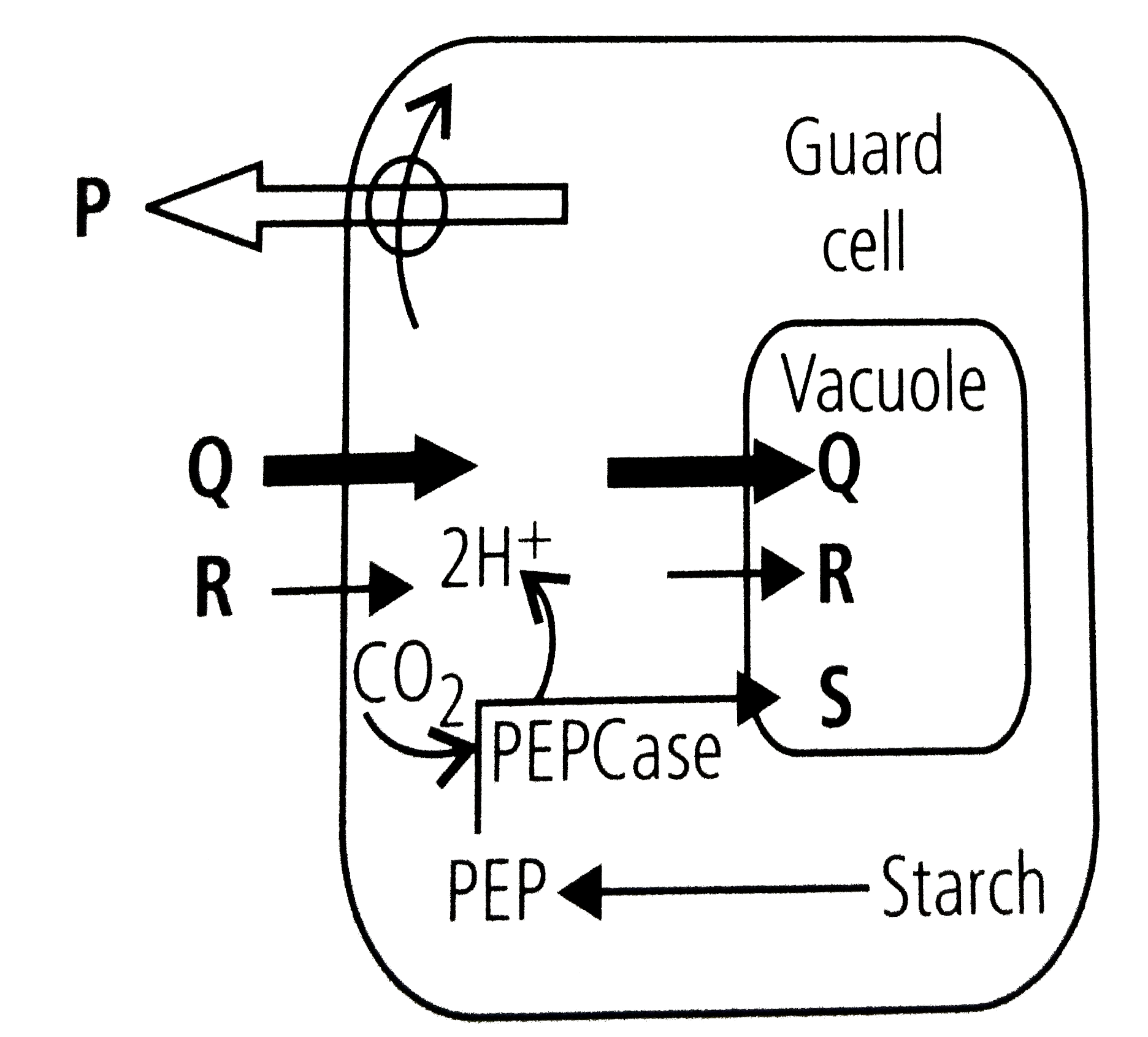Diagrammatically show the role of potassium, chloride and malate ions in stomatal opening.Solution in Punjabi
Step by step video & image solution for Diagrammatically show the role of potassium, chloride and malate ions in stomatal opening. by Biology experts to help you in doubts & scoring excellent marks in Class 11 exams.
Updated on:21/07/2023Topper's Solved these Questions
Similar Questions
Differentiate apoplast and symplast.
View SolutionWhat is life?
View SolutionChloride ion and potassium ion are isoelectronic. Then
View SolutionStomatal opening and closing involves the role of various ions. In the given figure arrows depict the movement of certain ions during stomatal opening in light. Identify the ions (P,Q,RandS) and select the correct option.

View SolutionDuring the opening of stomata , the organic malate ions are produced in the guard cells for maintaining the
View SolutionThe chloride ion is isoelectric with potassium. The size of chloride ion is
View Solutionসোডিয়াম আয়ন এবং ক্লোরাইড আয়নের মধ্যে আয়নীয় বন্ধন পটাশিয়াম আয়ন এবং ক্লোরাইড আয়নের মধ্যে আয়নীয় বন্ধন অপেক্ষা অধিক দৃঢ়। কারণ দর্শাও
View SolutionChloride ion and potassium ion are isoelectronic Then
View SolutionK^(+) plays important role in stomatal opening and closing.
View SolutionStomatal opening and closing involves the role of various ions. In the given figure arrows depict the movement of certain ions during stomatal opening in light. Identify the ions (P,Q,RandS) and select the correct option.

View SolutionChloride ion and potassium ion are isoelectronic, then
View SolutionThe chloride ion is isoelectronic with potassium. The size of chloride ion is:
View SolutionDuring the opening of stomata, the organic malate ions are produced in the guard cells for maintaining the
View SolutionStomatal apparatus||Opening and closing OF stomata||Potassium pump theory||Factors affecting opening OF stomata||Demonstration OF transpiration
View SolutionChloride ion and potassium ion are isoelectronic. Then
View Solution
